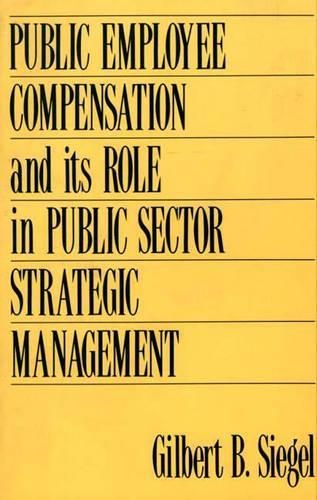
Public Employee Compensation and its Role in Public Sector Strategic Management
(Hardback)
Publishing Details
Public Employee Compensation and its Role in Public Sector Strategic Management
By (Author) Gilbert S. Siegel
Bloomsbury Publishing PLC
Praeger Publishers Inc
30th March 1992
United States
Classifications
Tertiary Education
Non Fiction
Central / national / federal government
Civil service and public sector
Public finance and taxation
354.41001
Physical Properties
Hardback
208
Width 156mm, Height 235mm
510g
Description
Beginning with the decade of the 1990s, the idea of strategic management of government and non-profit organisations burst upon the scene. Traditionally, governments have been thought of as being unchanging, resistant to change, or at the worst, changing by reaction to pressure only. Strategic management suggests both the idea of adaptation to change forces as well as defining mission and concerting future organisation design and behaviour accordingly, perhaps even changing the environment. Work force management is an important dimension of this new approach. Both direct and indirect compensation of this workforce to achieve possible objectives is a critical aspect of workforce management. The strategic approach to public organisations is also concerned more than ever with obtaining optimal performance, however it may be defined. Compensation, as a subset, is very much part of this quest for organizational performance improvement. Thus, there is a linkage of subparts, with many potential alternatives, organizational mission/objectives, compensation objectives, compensation system design and the role of pay in obtaining the desired types and levels of performance. This design chain is the focus of this book.
Reviews
It is a good introduction to the nuts and bolts of compensation plans, and how these plans can be modified to be consistent with changing organizational goals.-Canadian Public Administration
"It is a good introduction to the nuts and bolts of compensation plans, and how these plans can be modified to be consistent with changing organizational goals."-Canadian Public Administration
Author Bio
GILBERT B. SIEGEL is Associate Dean for Academic Programs and Professor of Public Administration, School of Public Administration, University of Southern California. He has consulted for various governments nationally and internationally in areas of human resource management. He has authored or coauthored five other books on public management subjects, and publishes regularly in journals such as Public Personnel Management, Review of Public Personnel Administration, Public Administration Review, and Public Productivity and Management Review.
